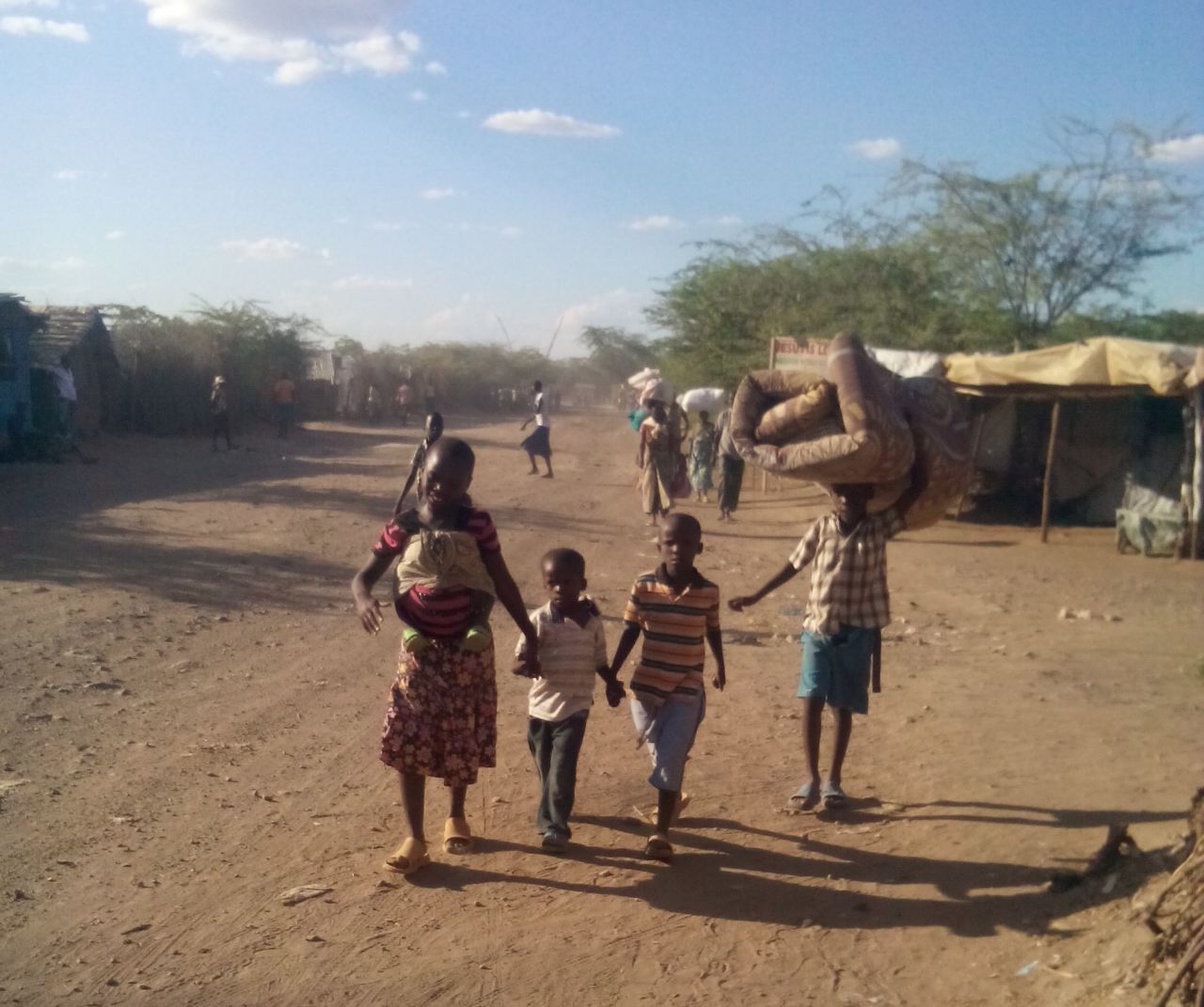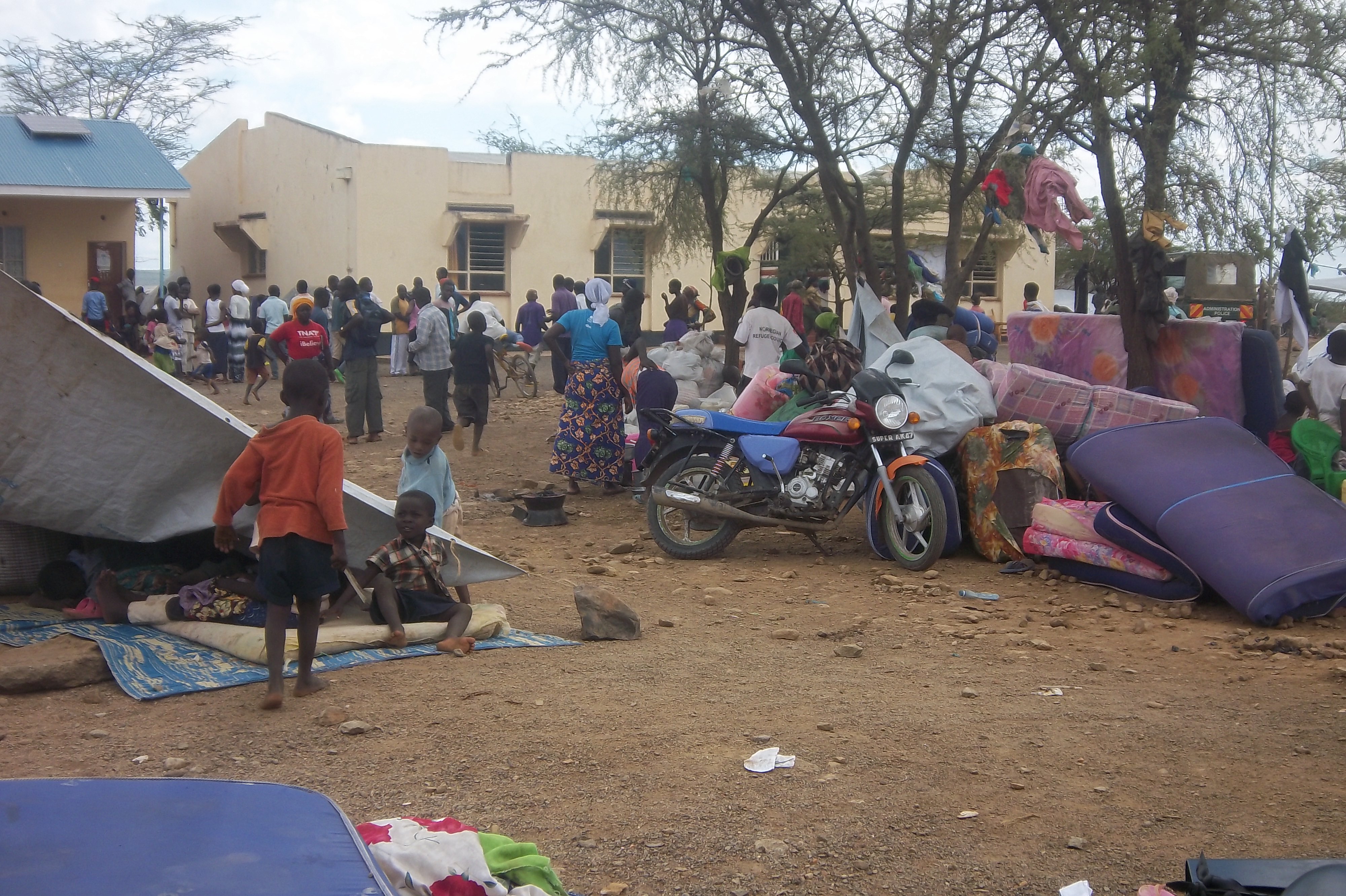Fighting erupted in Kakuma Refugee Camp killing at least 20 people and injuring hundreds.
The violence which occurred between the Dinkas and Nuers, who are the two major ethnicities fighting in South Sudan, claimed at least 20 lives. The groups moved out of their residential blocks and gathered according to tribal associations to fight in broad daylight, spreading violence through the camp. The fighting along ethnic lines mirrors that occurring in South Sudan’s ongoing crisis.
The first reported killing was on Saturday, 25th October 2014, in response to an alleged assault on a nine-year-old Nuer girl by a Dinka boy on the previous Thursday, 23rd October. Members of the Nuer community accused the police of corruption and incompetence in this case. A refugee leader from the Nuer community reported that the police released the alleged rapist under murky circumstances. “I’ve personally visited the ‘Hongkong’ police post over the rape case but police didn’t act responsively,” a Nuer refugee leader in Kakuma 1 told KANERE.
The fighting began in Kakuma 1 zone 3/4, normally referred to as ‘Hongkong’, before further escalating throughout the camp. Four people were confirmed killed on the morning of Sunday, 26th October.
By the 30th October, the number of people killed had risen to nine. However, animosity had also arisen between the Nuers and Burundians, after some youths from the Nuer community threatened a Burundian motorist who was accused of deliberately knocking down a Nuer child with a motor bike at Kakuma 4, thus creating a new conflict. In the confrontation, two Burundians were critically injured and one died while undergoing treatment in the camp clinic. The motor bikes of the deceased were burnt on the spot. This led to a further wave of fights between refugees from the Great Lakes region versus the Nuer community.

On the seventh day, despite the police presence in the camp the situation worsened as violence continued to flourish in the camp threatening other nationalities. A Dinka man was killed by someone from a different ethnicity outside the Al-Nur Primary School in Kakuma 4. The broad daylight murder scared away the children out of the school.
For more than a week, about 8,000 refugees, mainly Burundians and Congolese, took refuge at the churches and police stations outside the refugee camp for safety.
On the night of October 31st the killings in Kakuma Two and Three had resulted in two Nuers being murdered in different sections of Kakuma, while four corpses of South Sudanese persons were found in the dry riverbed that separates the camp sections. Killings continued throughout the day and night until Monday, 3rd November. The UN Refugee Agency UNHCR and the local governing authority were unsuccessful in trying to contain the situation. The Dinka, Nuers and refugees from the Great Lakes region killed each other with spears, machetes, and other crude weapons while Kenyan police were present in the camp.

According to two refugee leaders 22 refugees were killed in the violence and the report by UNHCR did not reflect the situation on the ground. “I doubt whether any humanitarian NGOs were able to document the killings that took place. We lost six refugees killed and thousands displaced from the Great Lakes community,” a Congolese humanitarian aid worker told Kanere.
The UNHCR Head of Sub-office in Kakuma was not able to comment on the situation of the camp to the press. However, the UNHCR spokesperson in Kenya affirmed that the numbers of refugees killed were eight but the refugee community leaders dispute this, saying the number killed were double the number listed by the UN official.
“In the first week of violence at least 10 refugees were killed from South Sudan, the situation worsened in the second week and we lost 11 refugees from different nationalities,” a leader from the Dinka community told Kanere in an interview.
A curfew was imposed and the rumble of the gunfire was heard throughout the night, which was believed to keep the combatant groups at bay throughout weeks of fighting.
Many of the warring groups have accused the Kenyan police of extra judicial killings in the camp. At least four people were reportedly shot by the police in the course of maintaining law and order during that period.
The area police boss was not available for a comment on the position of the government when contacted by Kanere. However, a regular police officer based in Kakuma 4 told Kanere that the situation was worse and an unknown number of people had been killed by the second week of violence. “We collected many dead bodies but there might be some not recognized,” the officer added privately.
Following the violence, more than 400 refugees were arrested, of whom 240 were taken to Lodwar Court for legal processing where they will be charged with incitement to violence.
More than 50 people appeared before the Kakuma Magistrate Court on Monday 17th November. Many of the detainees complained of having been assaulted while kept in the police cells for more than 48 hours. “We are beaten seriously when we are rounded up in the community, with wounds we are kept in the police cells for more than three days,” Gatluak Ng said.
“The police officers are the root cause of the violence between the tribes on a simple case that should have been handled in a professional manner,” a member of Nuer community stated anonymously.
Despite the armed reinforcement over the murders, the situation in Kakuma remained unstable between the rival groups.
The last incident was recorded on Monday, 8 December when a Burundian bodaboda (motorcycle taxi) was attacked by two people from a different tribe at Kakuma 3. The taxi owner sustained deep cuts from machetes all over his body. His situation worsened and he is feared not to survive.
Kakuma refugee camp has now been in existence for over 20 years and serves as a warehouse holding close to 200,000 people from eighteen different nations.

3 replies on “Violence in Kakuma Kills 20”
Kä täämë wä naa kä run mi goa kie run mi leyley, guiya je i cie ran nhök e je e long be wä run nä mi kokok
Is it not better to Educate and Enlighten One Another, with Compassion, than to continue this senseless Tribal Revenge Killing? Human Beings are “Hardwired in their Minds” to be Compassionate and this is the reason that we are stronger than ALL Animals and ” Why We Rule the World.” In previous times, Six Indigenous Tribes in the Eastern USA were constantly at war with one another, until one day they realized this great waste of Humanity, forgave each other, and at around 1100 A.D. formed The Great Haudenosaunee Confederation. Historians now write that this form of Indigenous Peoples Government had a strong influence on the minds of the men who wrote the American Constitution of the United States. Perhaps we should all learn from The Haudenosaunee.
Article by C. Charles Rudd
Artist and Humanitarian Relief Worker, with many years of experience in the East Africa Region.
[…] There’s nothing “good” about living in a refugee camp. What places like Kakuma offer must be couched in “better than” statements. Living in Kakuma is better than living in South Sudan, a nation erupting with famine in the midst of a civil war. There is food in Kakuma, though it is given out just twice a month in shrinking rations, and there is security, though the Kenyan police have been accused by refugees of rife corruption and unnecessary violence. […]